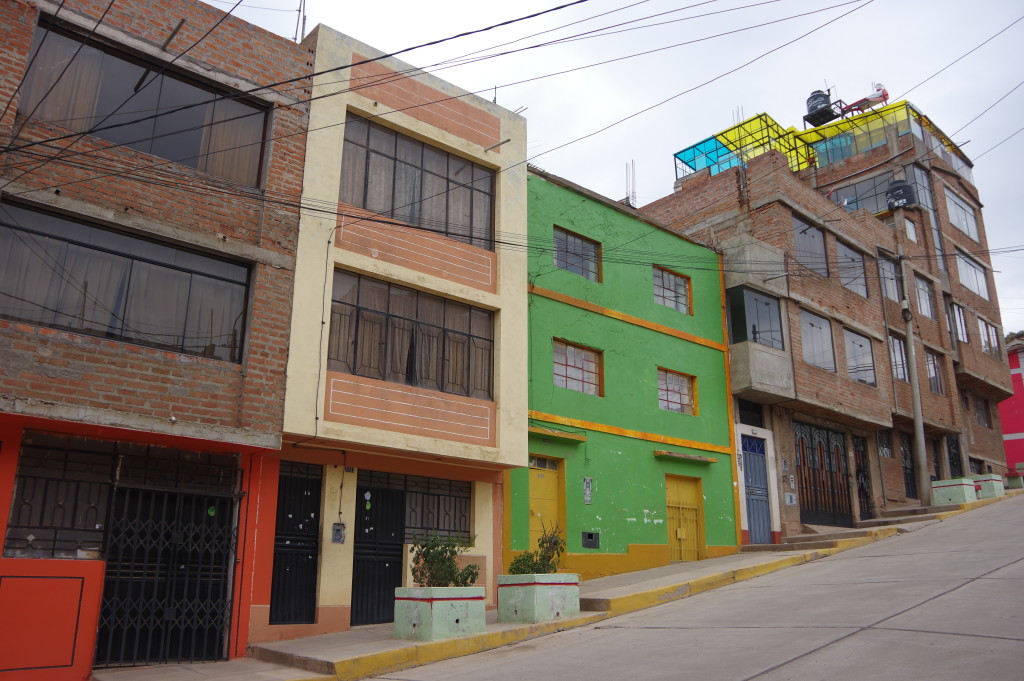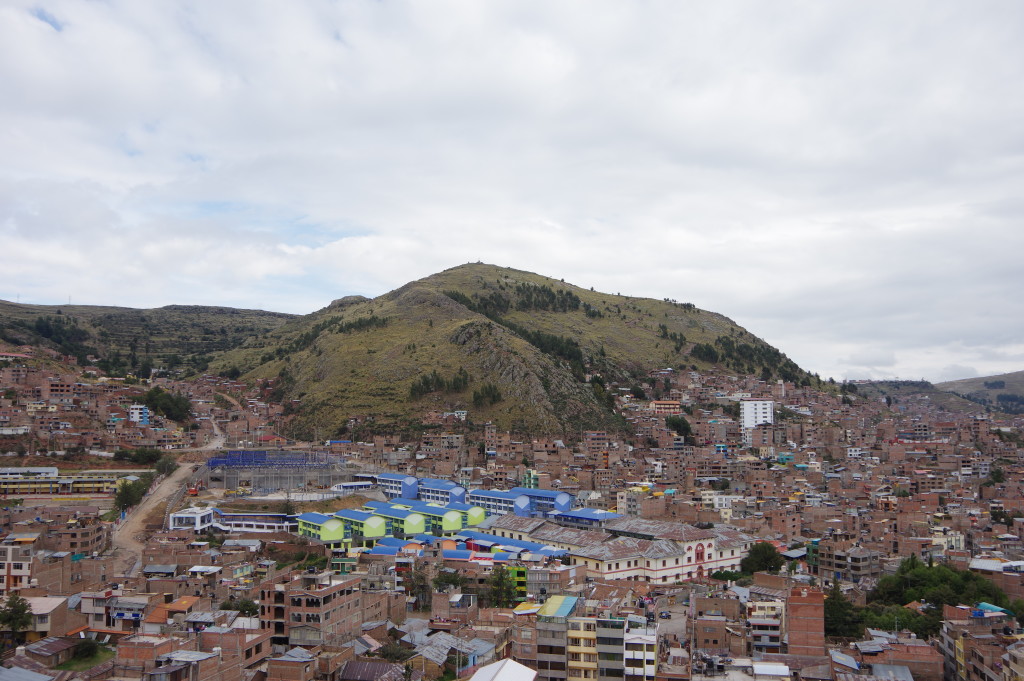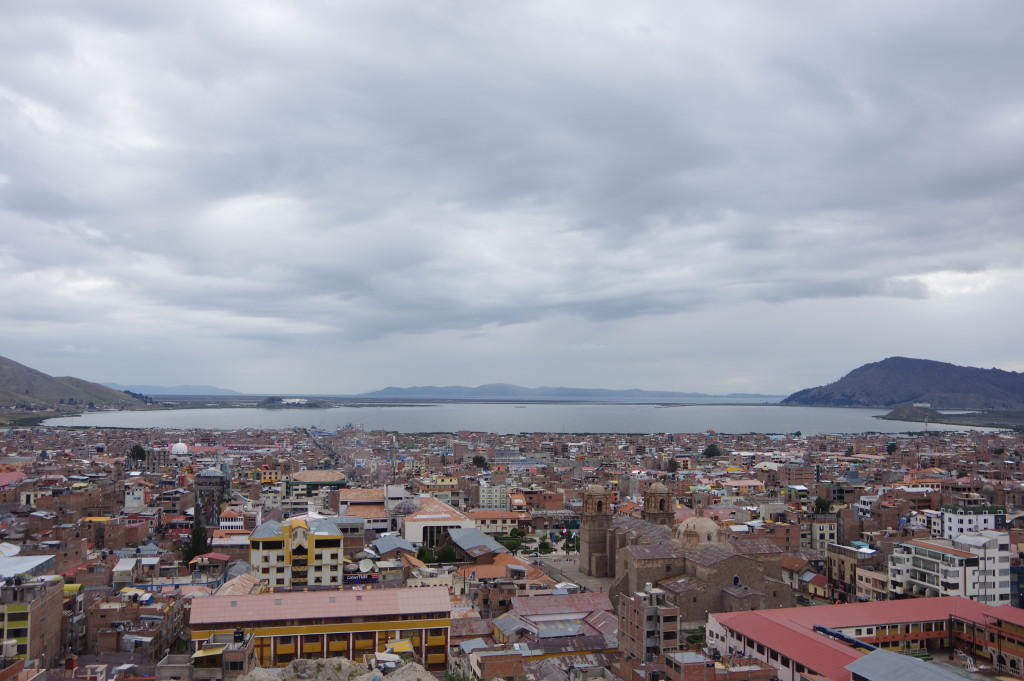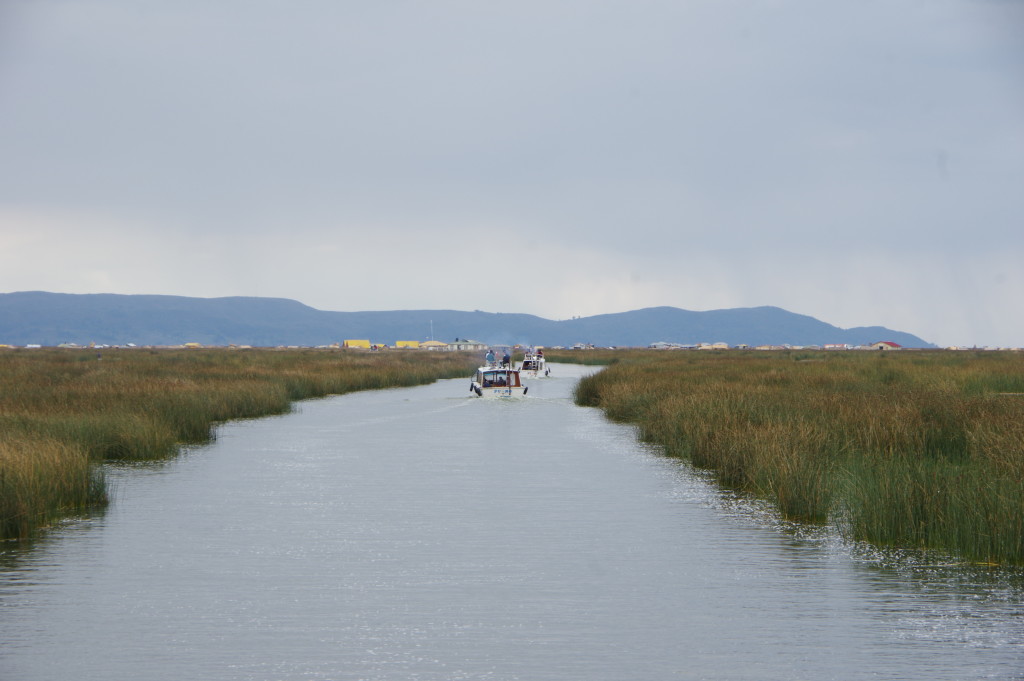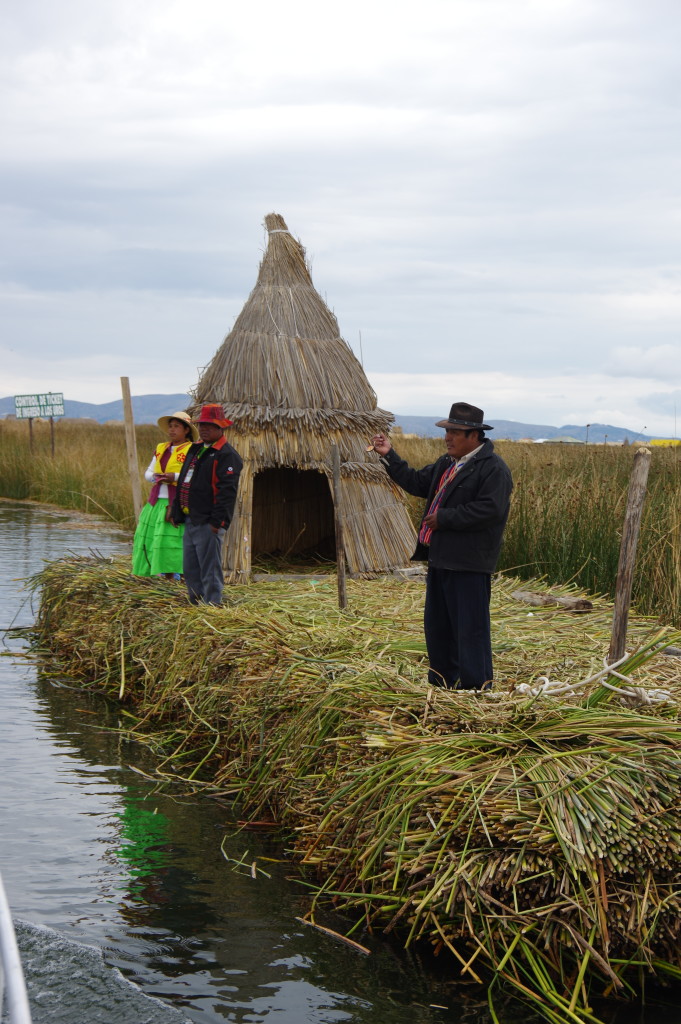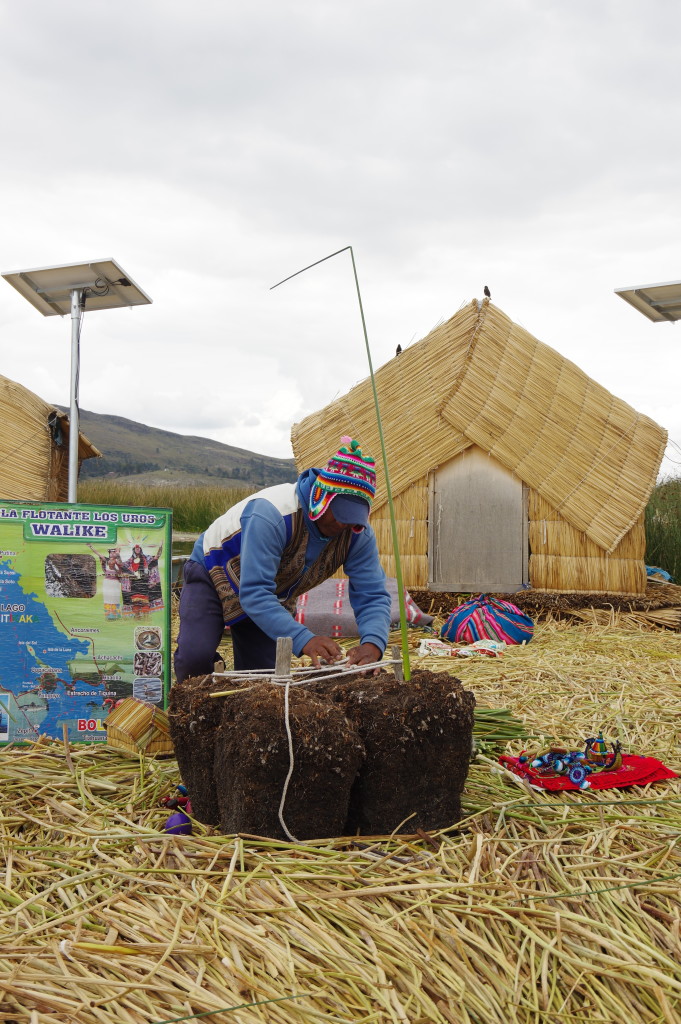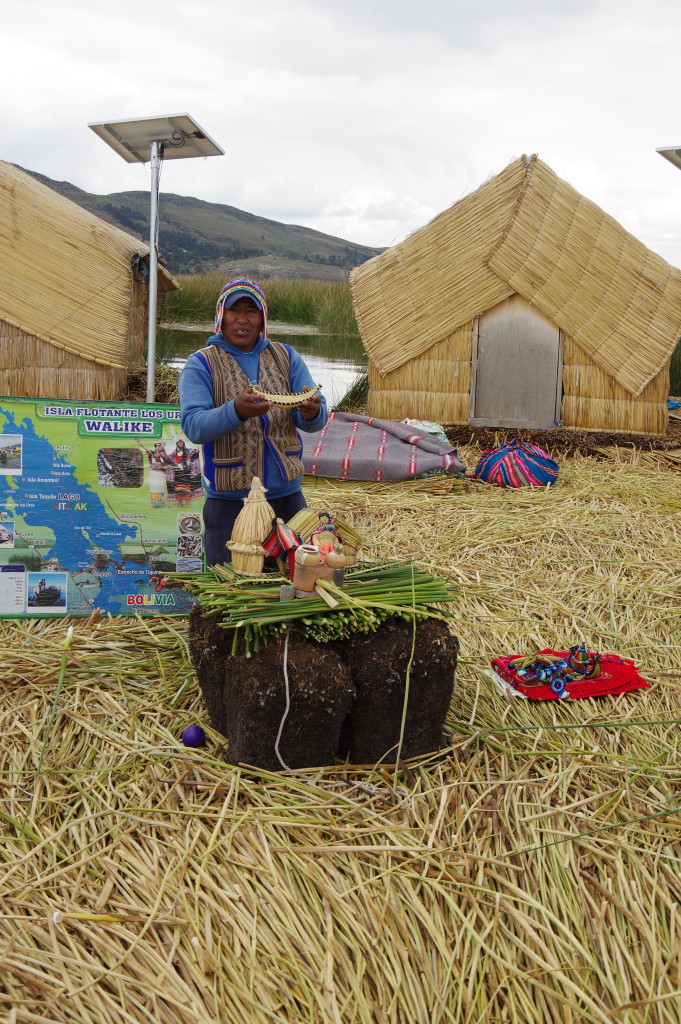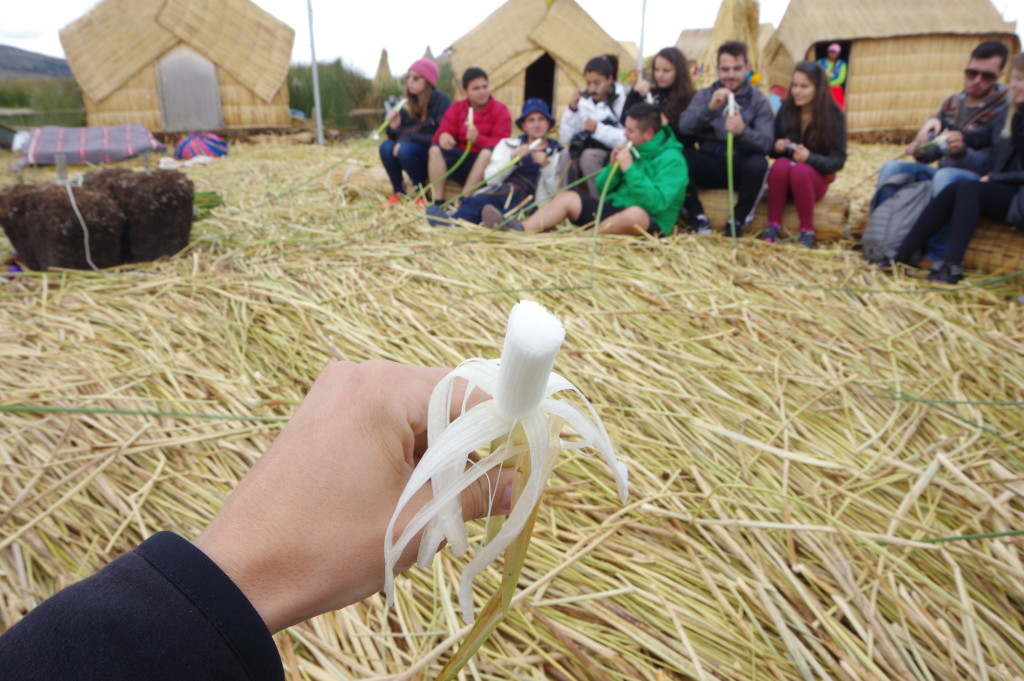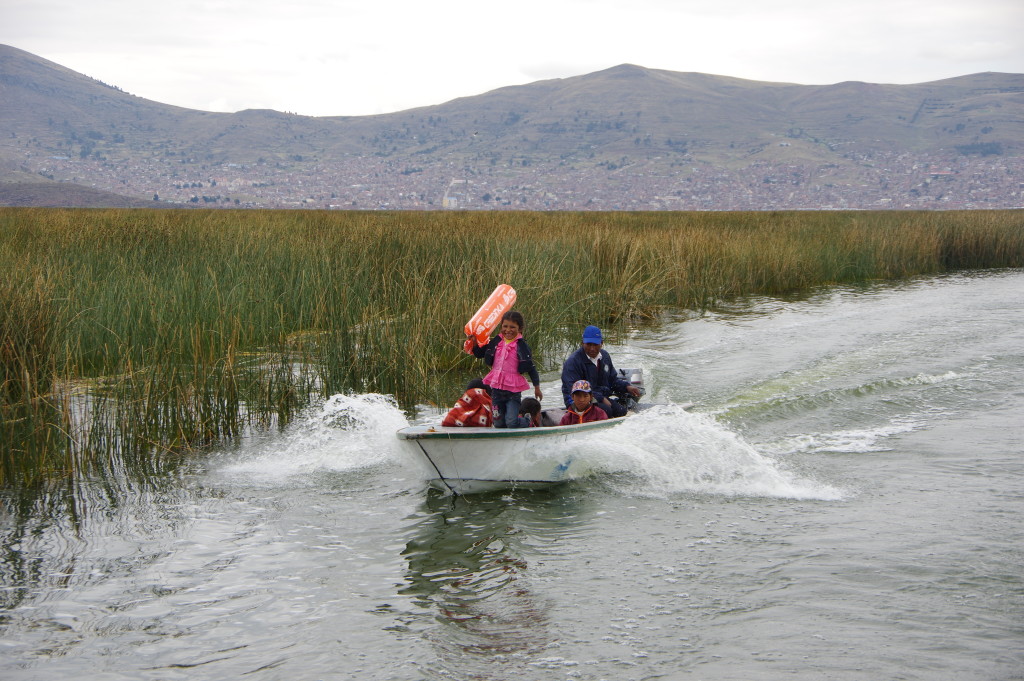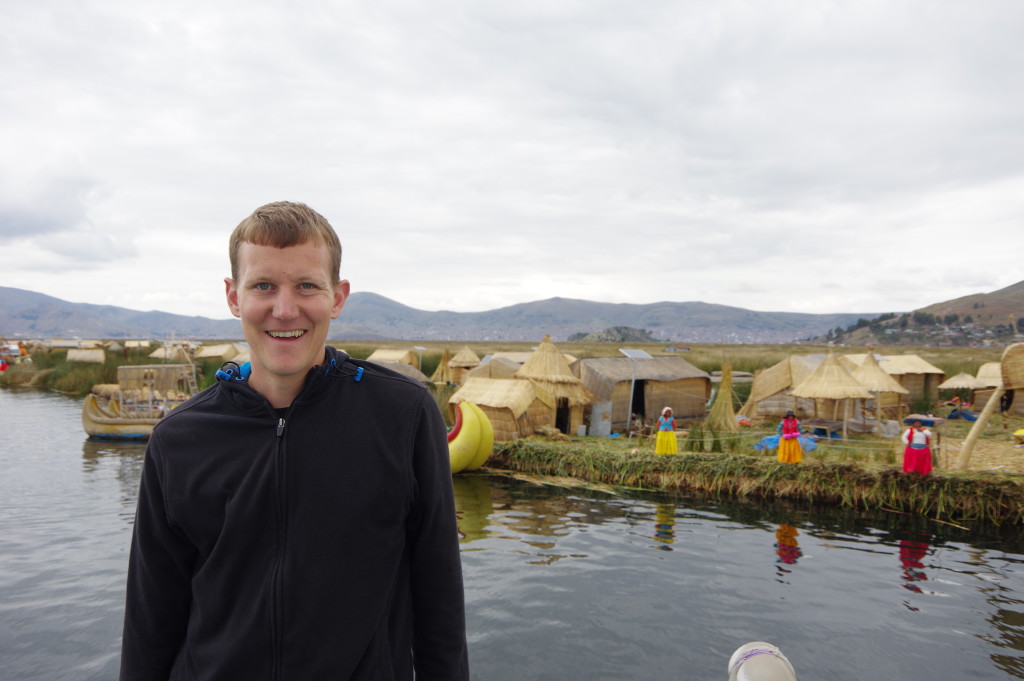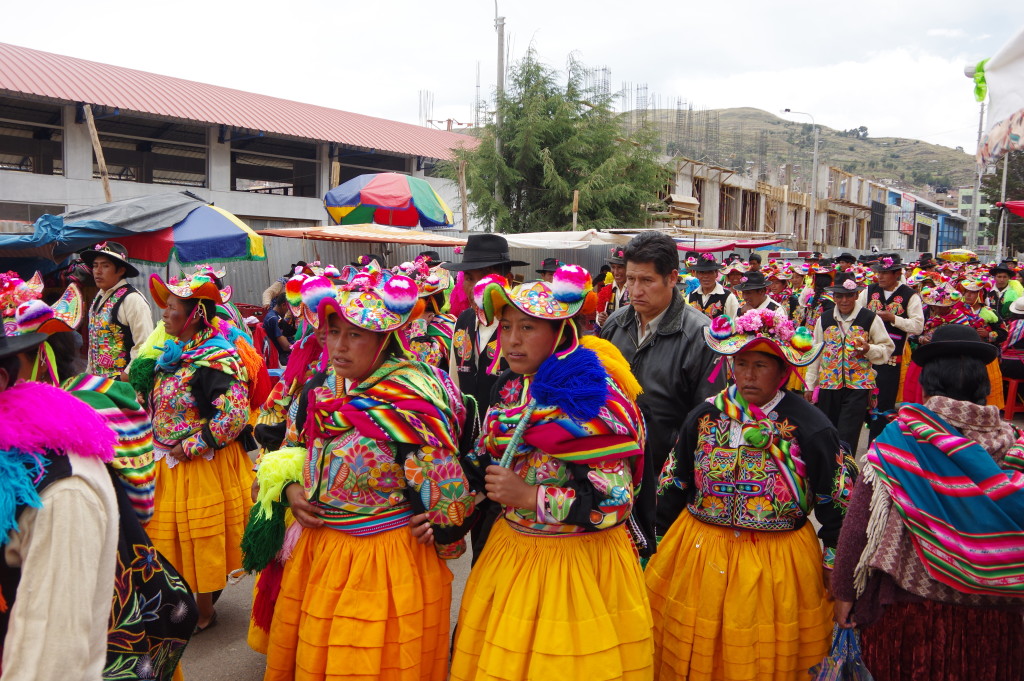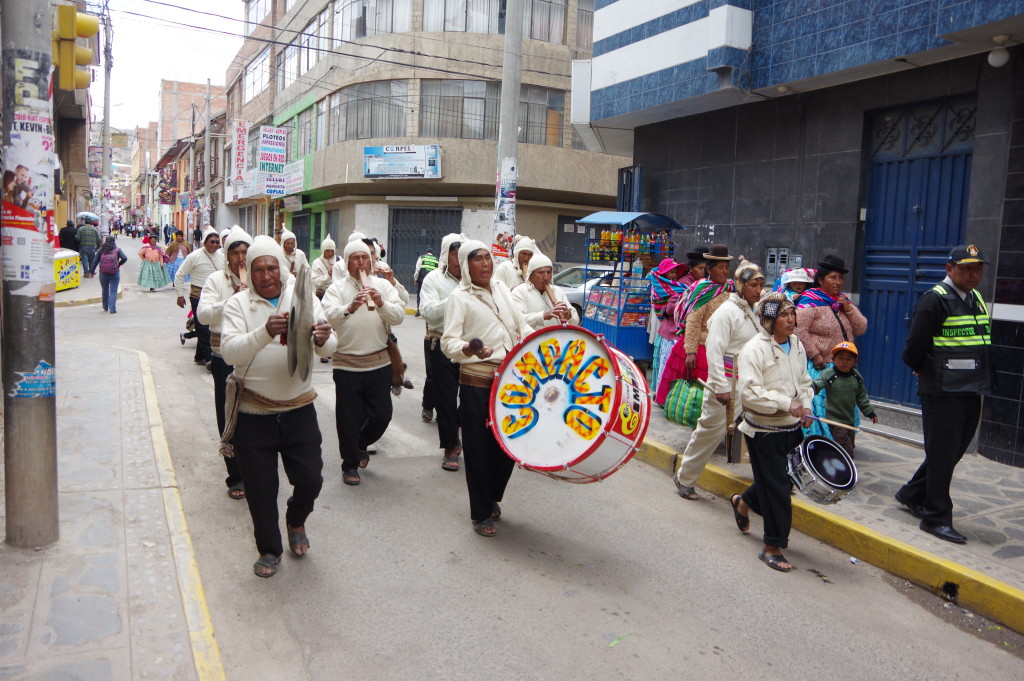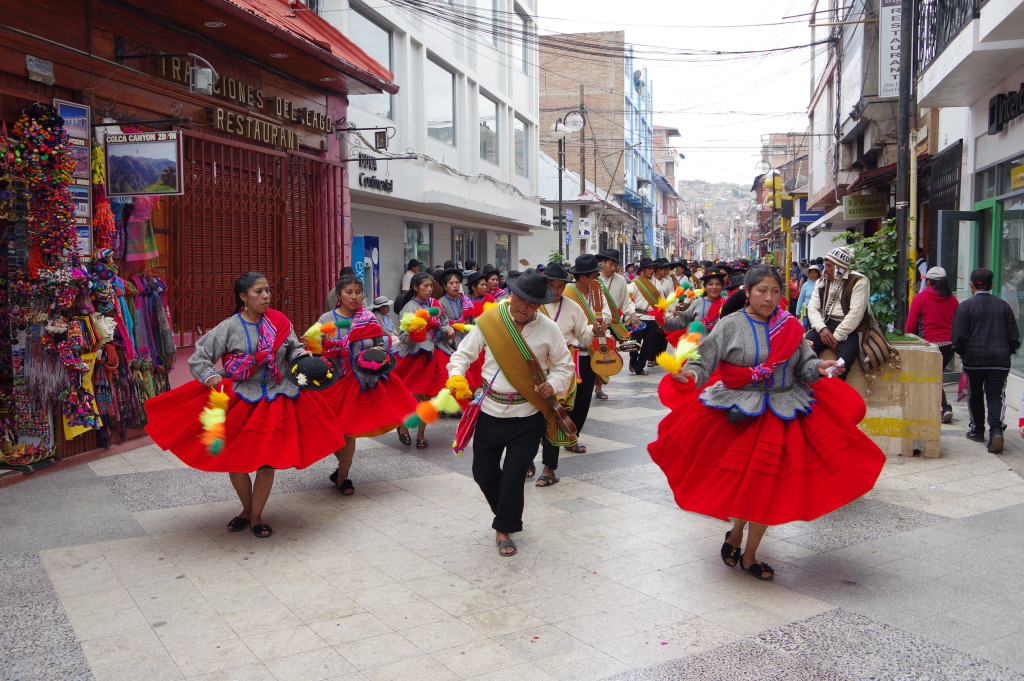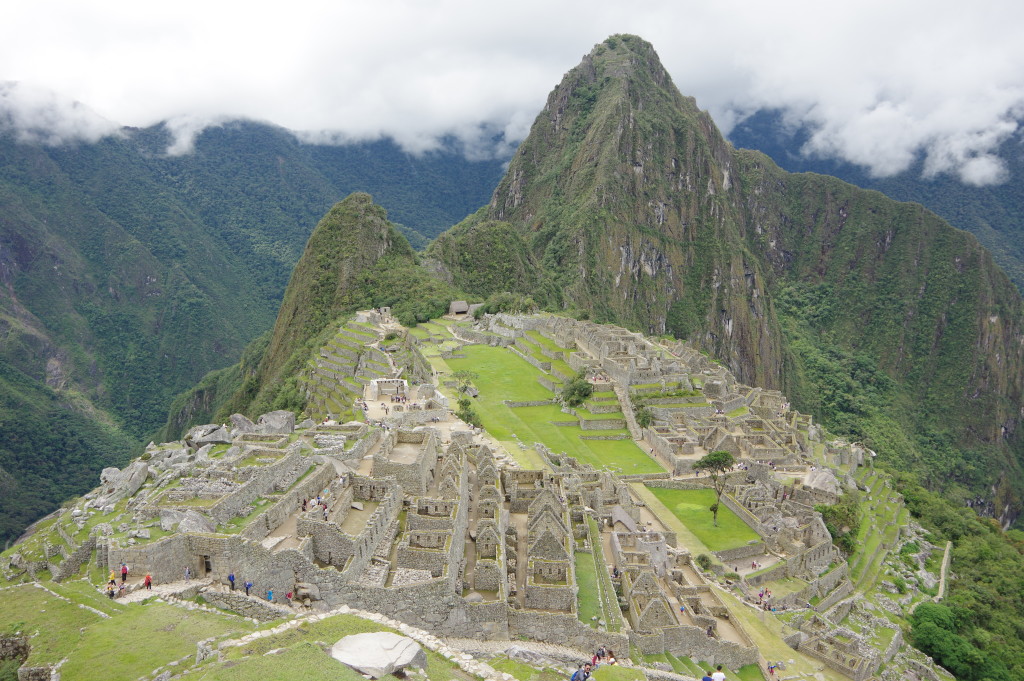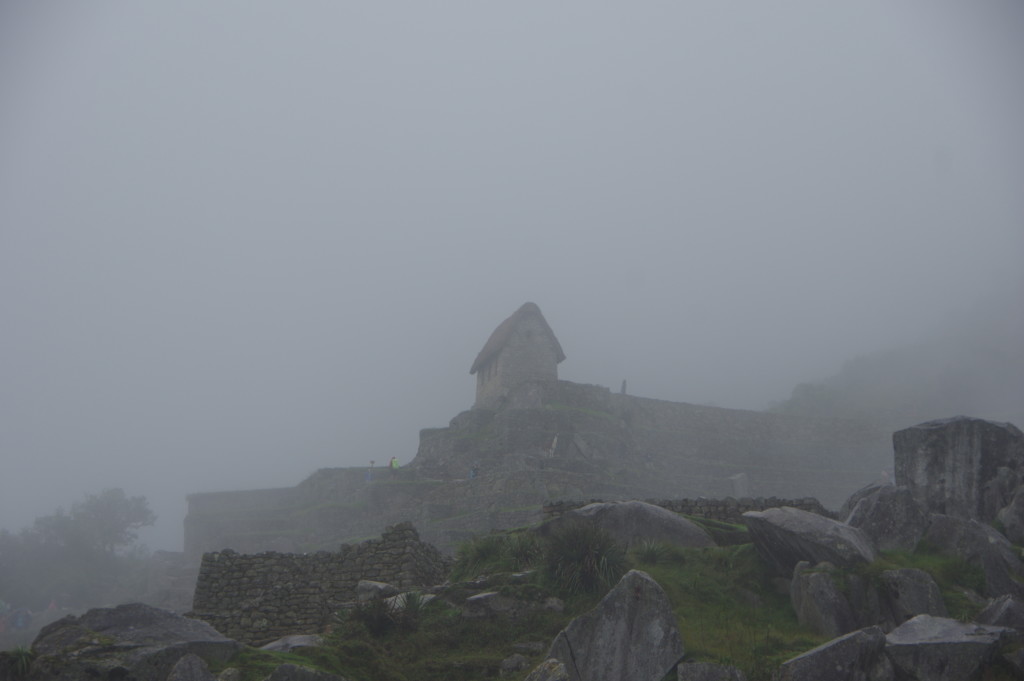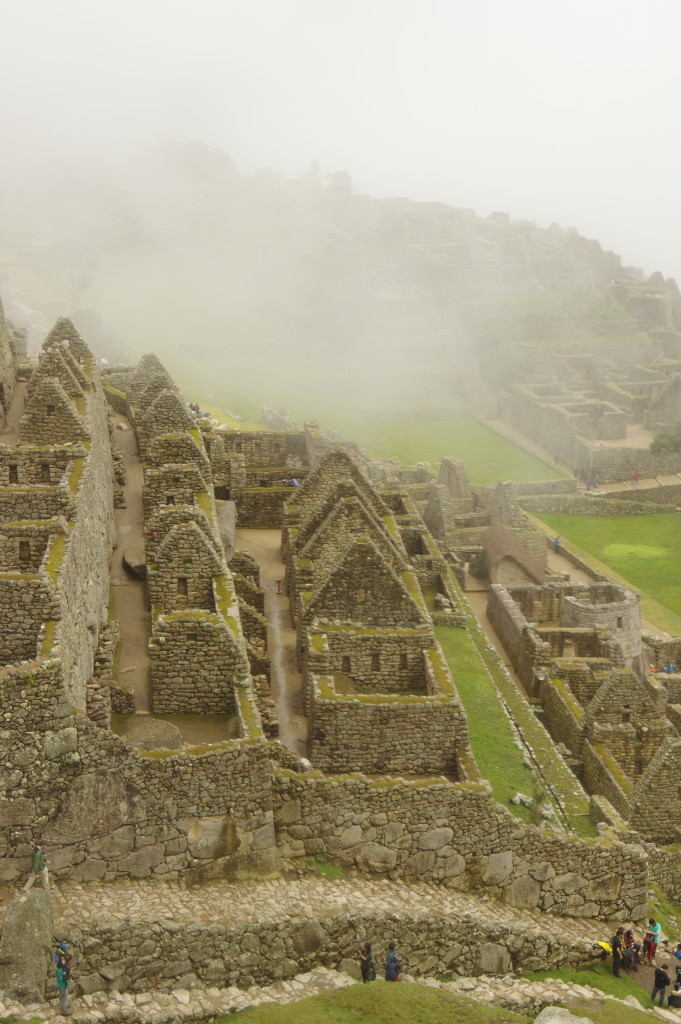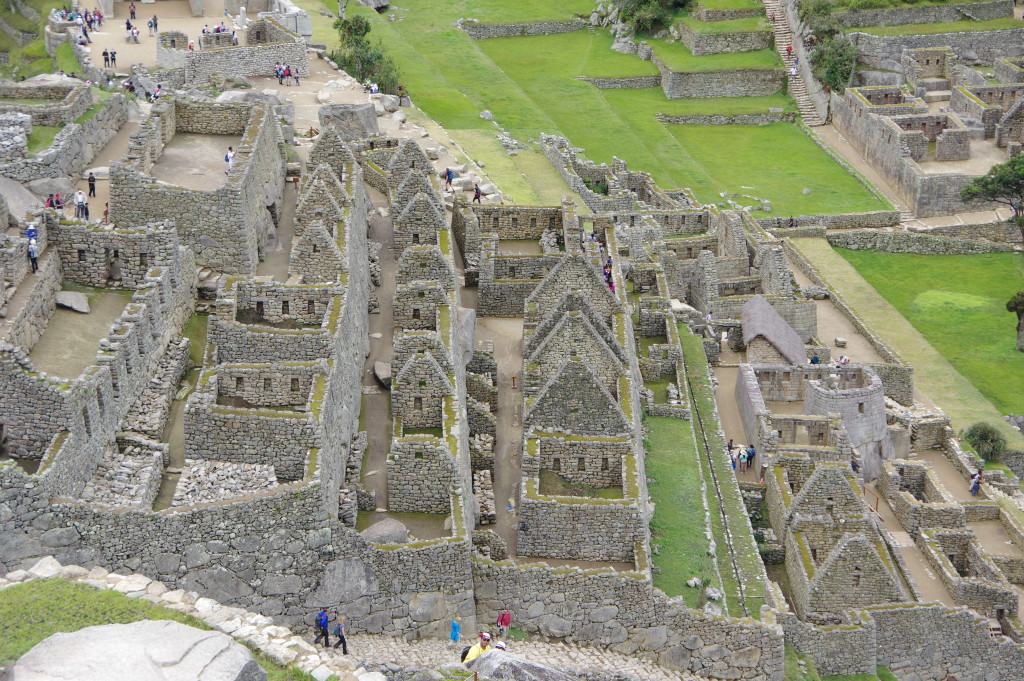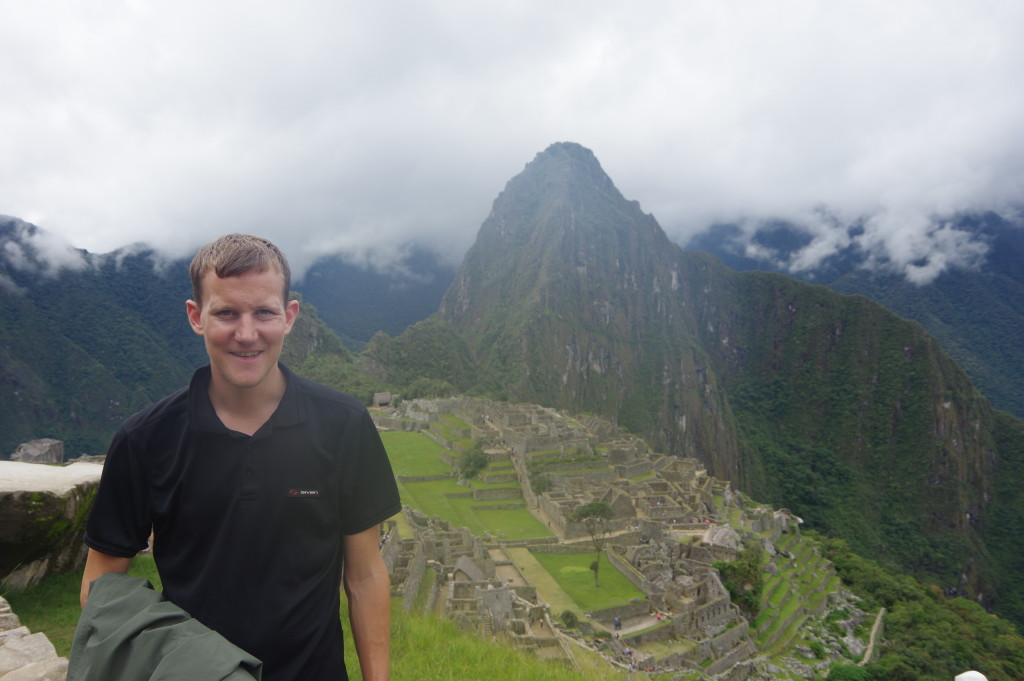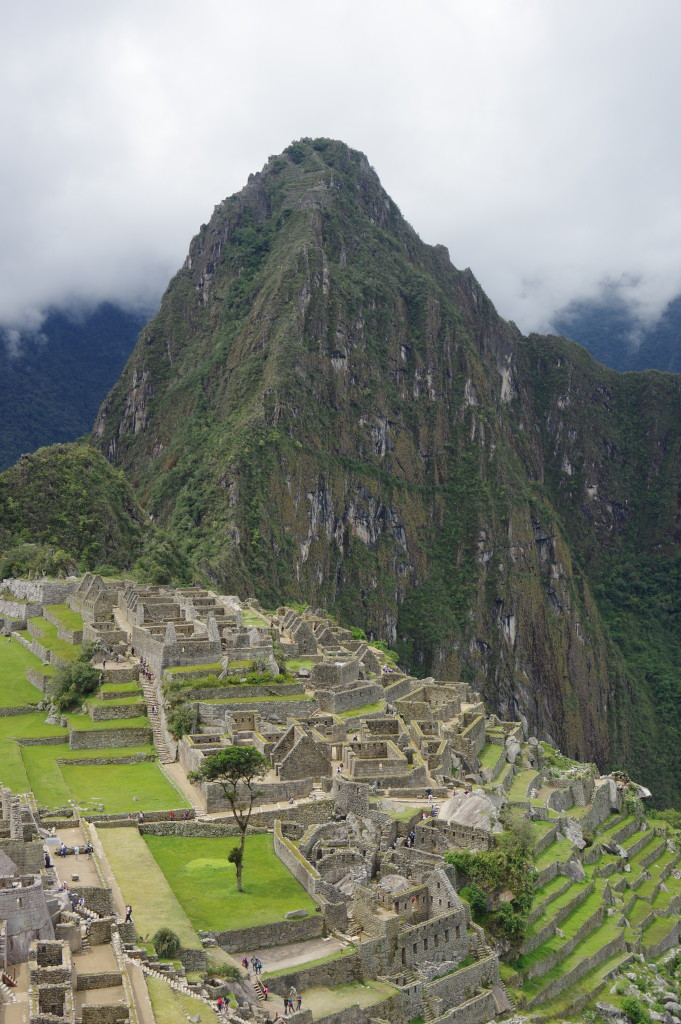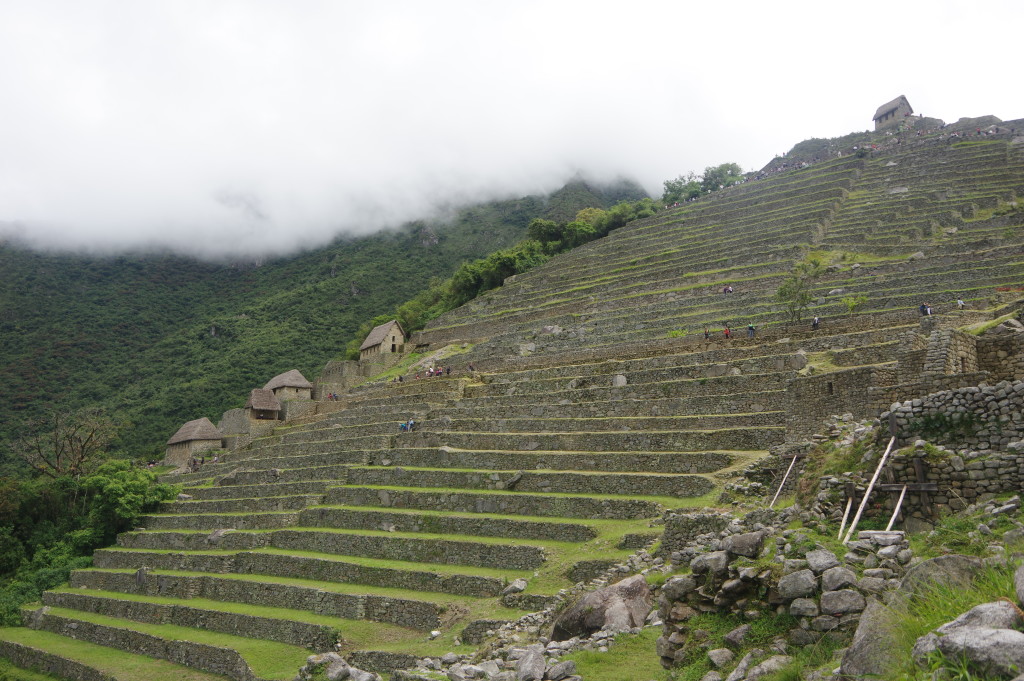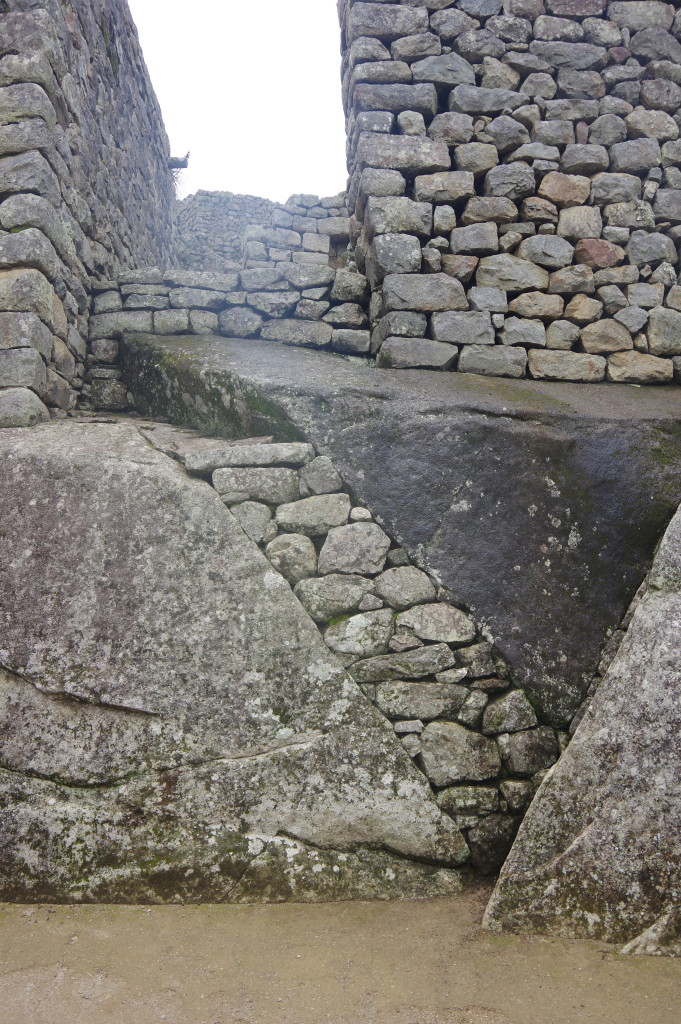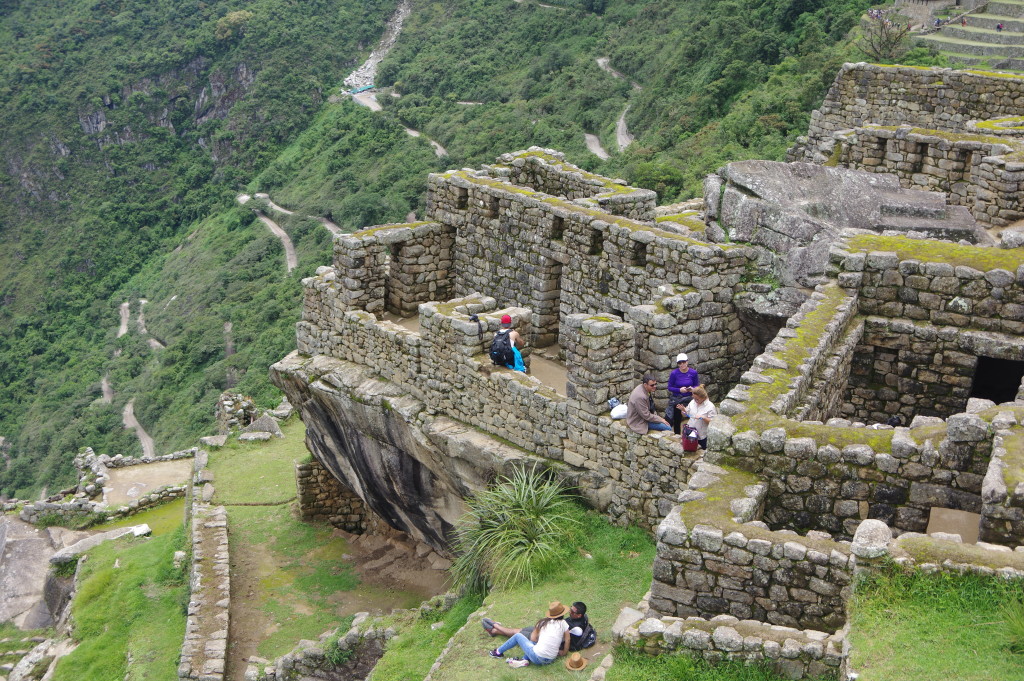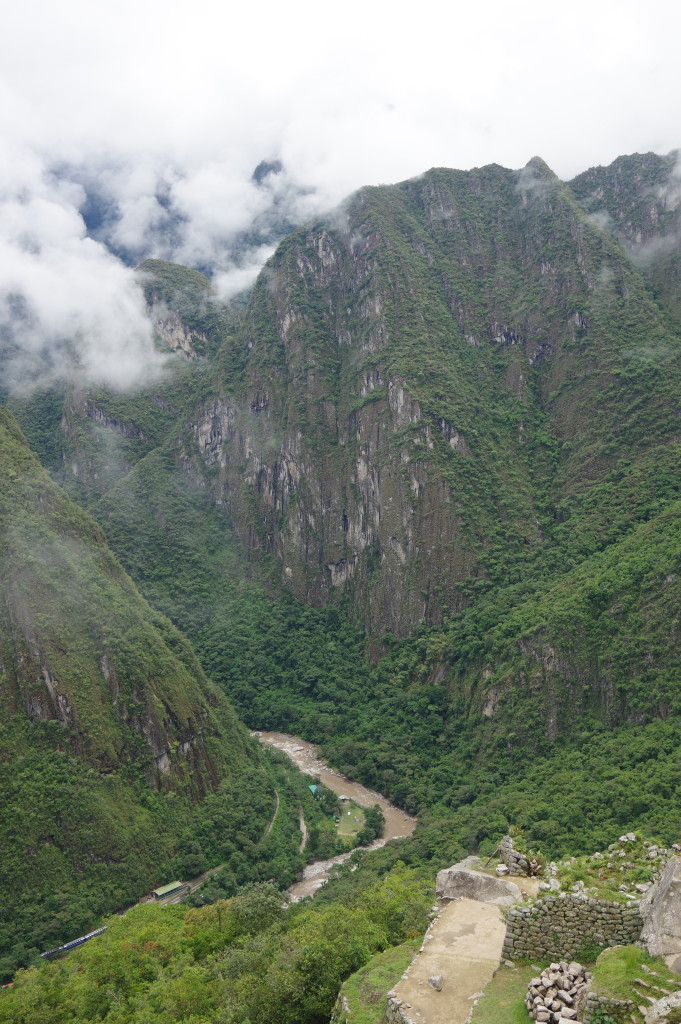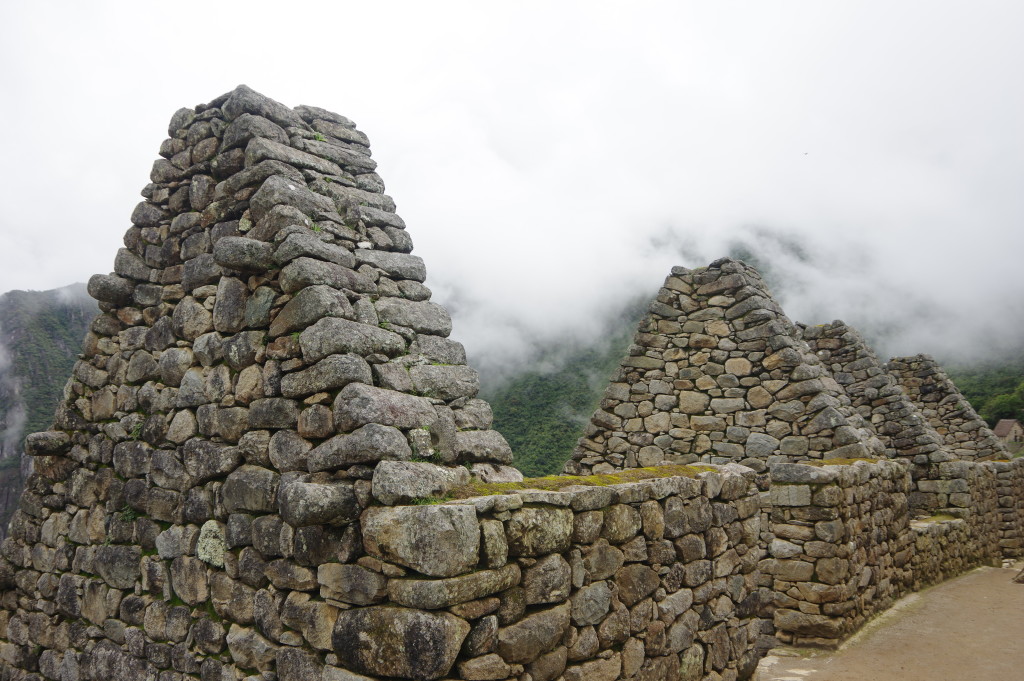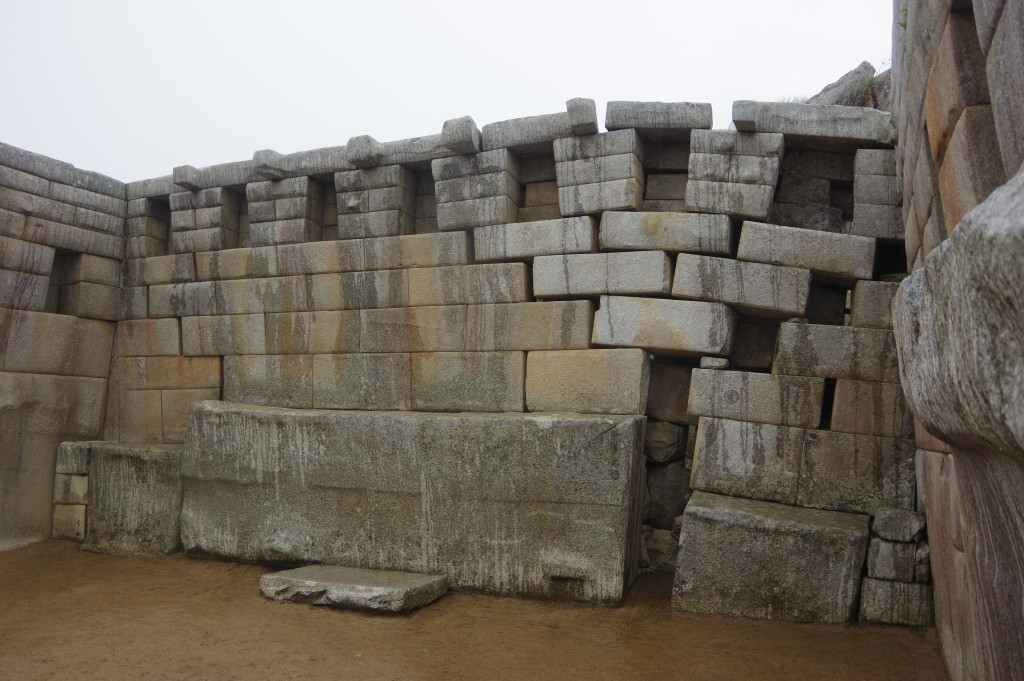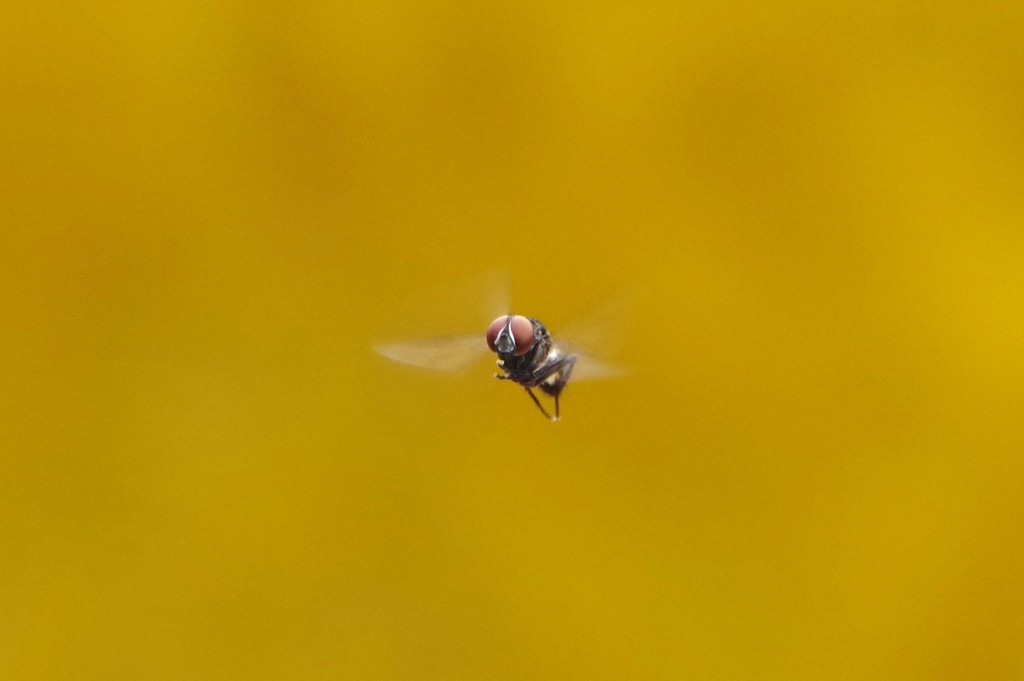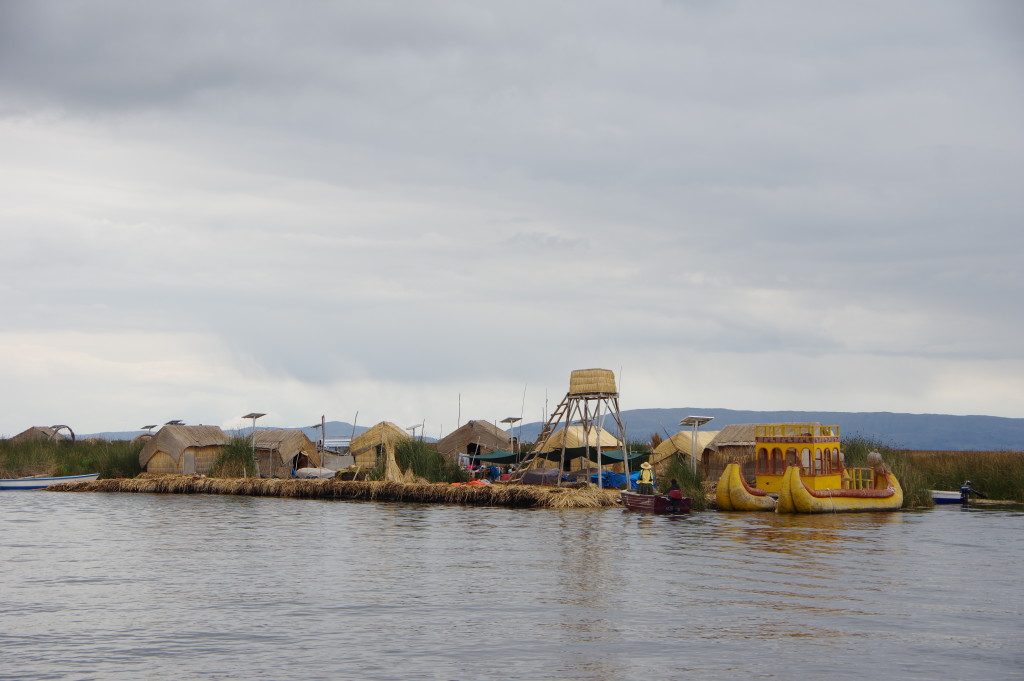
JAN 30, 2016 – After another night in Cusco, I took a bus to Puno, a city along lake Titicaca. It is much less touristy than Copacabana along the Bolivian shore of the lake, and looks rather poor. Nevertheless, there are some streets with fancier restaurants, travel agencies and other services for foreign visitors. Just a few kilometers away on the lake lie the floating islands of Uros. They are built from a plant called Totora, which grows abundantly near the lake shore, and inhabited by a traditional people who speaks the Aymara language. It seems like the inhabitants of the islands, or at least some of them, have accepted to devote a large part of their lives to tourism. They receive the tour groups on their little islands, explain how the floating islands and huts are built, and let visitors dress up in their traditional clothing. Then they offer to sell different handicrafts to them. A ride in a fancy-looking rowing boat built entirely of Totora is also offered against a small fee. Finally the group is dropped off on another floating island where food and drinks can be bought. To me it felt like the Uros people were giving up a large part of their identity and privacy by letting so many visitors see their houses and wear their clothes – they treated their traditional dresses as if they were a carneval dress-up.
Later that day I saw carneval or a similar celebration going on in the center of Puno. The costumes were very colorful and the dances synchronous. A lot of good and cheap food was sold in the streets. Only the music failed to impress me. Later that day I traveled on to La Paz, skipping Copacabana altogether.
